Sophia Olivia Sanan of the African Arts Institute spoke to some of the members of the Global South Initiative about the implications of migration on culture, the possibilities for Southern solidarity and the role of culture in the global development agenda.
This series of interviews were published in the December issue of ART AFRICA.
While dominant discourses of globalisation are still grounded in a state-centric understanding of the world, it has been recognised that ever-increasing migrational flows, alongside environmental instability, are some of the defining characteristics of globalisation. Within the last decade, there has been a marked increase of South-South migration. Contrary to the impression that most international media provides (particularly in light of the recent European ‘migration crisis’ stemming partly from the war in Syria), the majority of global migration is intraregional, within the countries of the former Soviet Union, South Asia, and West Africa (World Bank, 2011).
Despite the quantitative significance of South-South migration and its implications for conceptions of trans- nationalism, globalisation and cultural diversity, the debate on global migration has tended to focus primarily on migration from developing to developed countries. This focus betrays the Northern bias of international politics, international media and the deep-rooted inequality of the global development agenda. As this bias manifests in the centers of knowledge production, it ensures that the majority of social research and analytic knowledge (which is supposedly in the service of global problems) produces knowledge that reflects the North-centric global political economy.
The conviction of this ‘Northern bias’ has resulted in an abundance of intellectual and cultural production from a ‘Southern’ perspective. Indeed, choosing to talk about a ‘Northern bias’ could be seen as the most recent articulation of a very old story of globalization. Once described in terms of colonised and colonising countries; then in the Cold War era superseded by concepts of First, Second and Third worlds and finally in the era of Structural Development, these notions have been replaced
by categories of developed, developing and under- developed countries. The categories of Global South and Global North seek to eschew the hierarchical conflation of the ‘First’ and ‘developed’ world which designates the rest of the world as lesser or ‘catching up.’ While Global South and Global North speak to the historical and contemporary divisions in the global (dis)order, they allow for an assertion of epistemic and experiential equality that may allow a diversity of knowledges to shape universal categories and terms. It is in the construction of knowledge and ways of being that culture plays a critical and often silent role.
In a bid to understand, make a case for and further articulate the conceptual categories of Global North and Global South, the African Arts Institute (AFAI) with support from the Commonwealth Foundation, gathered together a group of cultural practitioners and leaders in the arts from Africa, the Arab region, Asia, the Caribbean, Latin America and the Pacific in the spring of 2014 for the ‘Global South Mini-Summit’ in Cape Town, South Africa. One of the outcomes of this meeting was the formulation of a developing initiative, which “broadly describes those countries and regions that generally do not have the economic muscle, the political and military power and the cultural/media influence to assert hegemony in the creative and cultural sector,” under the banner of the Global South.
In order to give cultural content to these global concepts, AFAI’s research manager Sophia Olivia Sanan spoke with three of the Global South Initiative members about their take on the implications of migration on culture, the possibilities for Southern solidarity and the role of culture in the global development agenda.
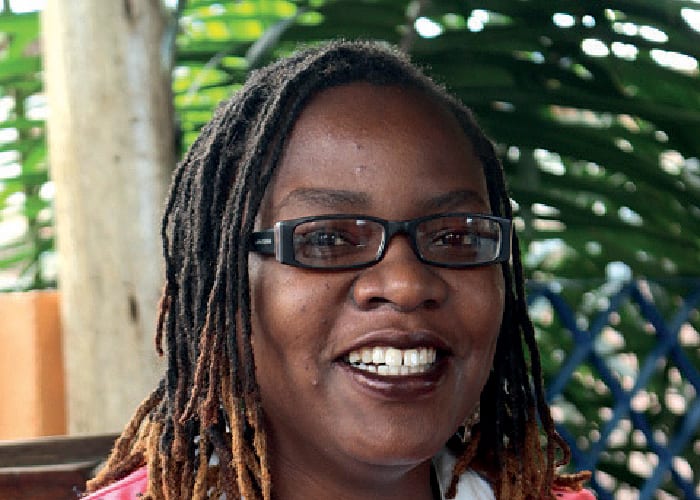 Image of Ayete Anne Wangusa.
Image of Ayete Anne Wangusa.
Ayeta Anne Wangusa:
Arts and culture social entrepreneur and thought leader who advocates for the role of culture in development programmes, particularly in East Africa. Wangusa is currently one of the African Experts for the 2005 UNESCO Convention and has built the early part of her career on advancing literature and women’s cultural participation in East Africa.
Sophia Olivia Sanan: You are described as an ‘arts and culture’ social entrepreneur – what does this mean?
Ayeta Anne Wangusa: I describe myself as an arts and culture entrepreneur because I initiated the idea of a creative think tank that is guided by an innovation and incubation framework made up of three components, namely: the organisational vision that places culture at the centre of development; the process – which includes a structured workplace, a learning program for volunteers and an audio visual incubation lab, all of which provide the means for research, advocacy and capacity building; and lastly, the space – for co-working, hire, community building for artists as well as staff and board teambuilding. The social change we would like to see is an improvement in the policy, planning and investment ecosystem for the cultural sector, in order for it to be lucrative in the context of the East African Regional Integration process, as well as improving arts development in East Africa supported by modern infrastructure and co-creations from creative organisations and individuals.
To what extent are the social and cultural issues that you encounter particular to East Africa, and to what extent can they be seen as issues of the ‘Global South’?
From a cultural perspective, East African countries have historically had a North- South trajectory to support their cultural sectors. This trajectory starts with the global North initiating policy terms and white papers, introducing these to the South and making available resources to implement projects aligned to these policy terms. This is the trend in many other Global South countries, save for Latin America, India and South Africa, where government has played a pivotal role in investing in their cultural sectors.
A key feature of countries from the Global South that finance their own cultural programme is that they appreciate the value of placing culture at the centre of development. They are able to address issues of social justice, ecological balance and self-reliance. The role of intangible heritage has been recognised by environmentalists – especially in small states and islands in the Global South – and the role of the arts in promoting social cohesion is apparent. However, institutionalising the process of development planning to plan, resource and monitor the cultural sector remains a challenge in the Global South (especially in Africa) due to limited evidence research and indicators. Côte d’Ivoire is one such country in Africa that has anchored development planning in the history and cultural context of Africa. This is becauseit has a Ministry of African Integration that operates through an inter-ministerial mechanism.
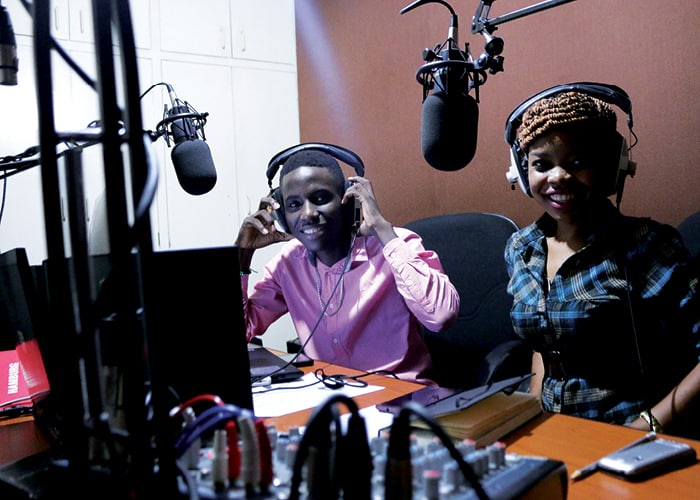 Midundo radio. Courtesy of Ayeta Anne Wangusa.
Midundo radio. Courtesy of Ayeta Anne Wangusa.
At this point, why is it important to work under the imperative of women’s rights in East Africa?
Gender equality is not only a fundamental human right, but also a necessary foundation for a peaceful, prosperous and sustainable world. In the cultural sector, there is need for a deliberate effort to include women in all stages of cultural programming and policy planning, as well as in implementation and evaluation. Evidence shows limited participation in decision-making in policy formulation and programming for the sector, yet women dominate most of the occupations in the cultural sector in East Africa, such as crafts, media, advertising and literature (judging by the number of women who have won awards).
Do you think that there has been progress made in global development discourses with regards to the acknowledgement of the role that culture plays in shaping human lives? If not, what needs to be done to challenge the direction of the global development agenda?
Yes, there has been movement in the global campaign to include culture in the Sustainable Development Goals (SDG’s). While sector didn’t achieve a goal allocated to culture, when compared to the Millennium Development Goals, it is a significant step forward in acknowledging of the role of culture in development processes. Nevertheless, the inclusion of cultural aspects such as traditional knowledge, education and the role of creativity and innovation must be encouraged in National Development Plans, international cooperation mechanisms and other strategies and policies so that resources can be allocated for implementation, supported by evidence-based research and indicators.
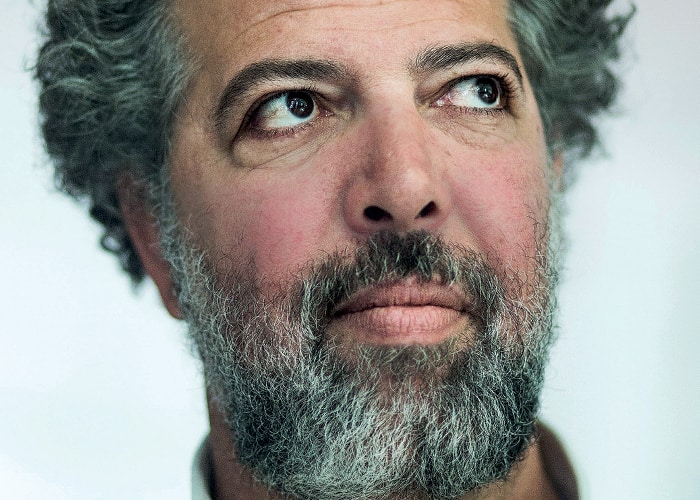 Image of Aadel Essaadani.
Image of Aadel Essaadani.
Aadel Essaadani:
Former Chairperson of Arterial Network, Essaadani is the co-founder of Racines, a Moroccan association for culture and development based in Casablanca, Morocco, the technical director of various festivals and associate director of the Institute of jobs in the performing arts. He has a background in urban planning, urban sociology and the performing arts.
Sophia Olivia Sanan: Do you think that the notion of ‘Global South’ is helpful in describing the current world-order?
Aadel Essaadani: We do not have much time to lose in the philological study of definitions. The accuracy will come with the actions, especially in terms of emergencies related to our ‘Global South.’ The ‘Global South’ is a convention of language like (for example) the ‘Third World’ was before it. The most important thing is what it gathers and conveys as information; as a description of the economic world order, in particular to show who benefits from whom. Even within the southern countries, the ‘Global North’ promotes the ruling class of the South, allowing them to keep the underdeveloped countries as markets for northern goods, circumventing the development that could make these countries competitors of the North. As a concept, the ‘Global South’ could be used to explain how developed countries impose their rules, particularly economic ones (Free Trade Agreements, for example). Supported by political influence, they push their hegemony without addressing the issues of social injustice and economic equity between North and South.
Is there greater cultural affinity between North Africa and the Middle East or the Mediterranean region?
I don’t know what the word ‘affinity’ means in this context. If it translates to a ‘convergence of interests,’ then those who defend the same cause have more affinities to do it together, regardless of geographical origin. Those who have no interest in things changing work together to get there. As part of civil society, the nature of our work is to achieve social development and enable people to learn from each other. As a Moroccan, I listen to Moroccan, African, Arabic and Middle Eastern music, but also to rock and Chopin. There are ties between cultural and racial affinities; so cultural affinities may include a dose of racism in them. Bringing affinities back strictly to identity aspects can result in what Amin Maalouf calls “murderous identities.” These can be found, for example, in the Middle East, between Sunnis and Shiites, while we know that states use both cultural aspects to justify wars. We share cultural affinity with people who nurture a culture of openness to all cultural affinities.
To what extent is there cultural unity in Africa and is such unity a worthwhile aim – as opposed to alternative geographic affiliations?
What brings us together should be universal. Respect for human rights, freedom of creation and expression… from and for all. Unity will come from what we stand for. Let’s say the alternative to geographic affiliation is Humanism.
What are the greatest barriers to realising greater engagement and exchange (both cultural and economic) within Africa?
Lack of democracy is the biggest obstacle in Africa. Then there is corruption, not only related to money but also – and worse – to the corruption of the spirit. Another obstacle that stems from the first is the amputation that many African countries have suffered from as a consequence of the
structural adjustment plans implemented in the early 80s. This has not changed, there is always an equity split between Africans in access to education, health care and culture. Africa is not so poor, and even historically, people in the poorest countries have developed over the centuries – resilience having enabled them to live on little. The key is regaining dignity, taking the right to make our own mistakes and to move forward without dictation from others.
In your experience, does migration (both internal and foreign) in Morocco enable increased opportunities and instances of cultural exchange or increased cultural assimilation?
The problem of external migration is exactly the fact that it’s considered a problem and not as good luck. The meaning of our struggle is to put culture at the heart of development, at the human and social level. Social development aims to open up minds to the understanding of other cultures, other ways of thinking and living. There is no other way to know others than to rub shoulders with them daily. But a common reflex – especially in times of crisis – is the withdrawal into oneself. This is the reason we must go back to our old ancestral customs of hospitality, thirsty for exchange with passing travellers and nomads.
Internal migration in Morocco is primarily economic and due to rural exodus. The living conditions in rural areas are increasingly hard, especially because these rural areas are the last to be supplied with utilities. People move in order to find more dignity and liberty, often just to survive. We need to reframe this move as something other than an escape from our ‘natural’ environment.
Do you think that there has been progress made in global development discourses with regards to the acknowledgement of the role that culture plays in shaping human lives? If not, what needs to be done to challenge the direction of the global development agenda?
In global discourse, culture is viewed in a negative rather than a positive prism, although international fora are concerned with interrogating this view. A brief analysis will show that the countries against the integration of culture into development policies are either oppressive countries where freedom of creation and expression could be dangerous for their stability (China or Saudi Arabia), conservative countries where culture and acceptance of the other is banished (Qatar or again, Saudi Arabia) or countries that practice a cultural or economic hegemony (United States or France with its concept of cultural exception).
After two years of global negotiations, the United Nations SDGs for 2030 still only refer to culture as a tool for development four times on one-hundred-and-sixty- nine targets within the seventeen goals. The world is still managed by the global economy. Stability is counted only because it is necessary for the economy. Some countries prefer to instil forced stability (by the police or the army) rather than stability through human and social development initiated from and through culture. The world is still cynical.
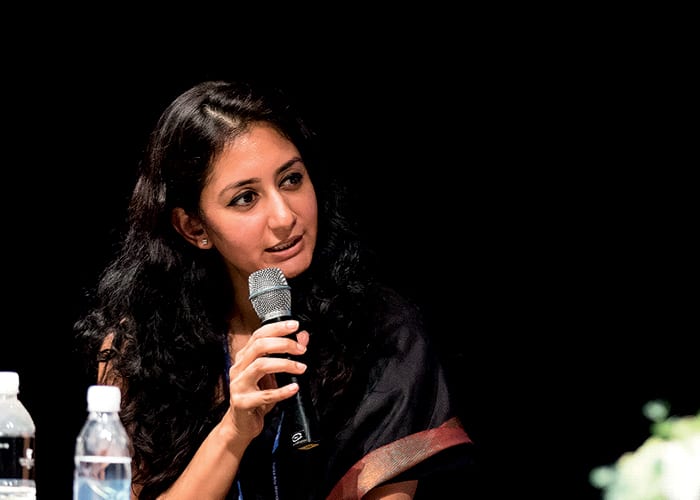 Image of Anupama Sekhar.
Image of Anupama Sekhar.
Anupama Sekhar:
Director of the Culture Department at the Asia- Europe Foundation. Sekhar is also a member of the Expert Facility of UNESCO and the U40 Network of young cultural policy experts. She holds degrees in English Literature and International Studies and is a trained dancer in the Indian classical style of Bharatnatyam.
Sophia Olivia Sanan: Given your work in the field of cultural policy, to what extent is it relevant to talk about a ‘Global South’? Is this a helpful categorisation in relation to the formulation of cultural policy?
Anupama Sekhar: The North-South divide is essentially considered a socio-economic divide. The relatively similar socio-economic realities of countries in the Global South – many of which are also post-colonial societies – impact the development of arts and culture in similar ways, thus opening the door for a useful exchange of ideas, including cultural policymaking. The mobility of artists from the Global South to the North, for instance, remains a common challenge. In this context, yes, it is relevant to talk about the existence of a ‘Global South.’ The established centres of the art world continue to be located in the Global North. The criterion of traditional art history, for the most part, comes from the Global North. The compass has been pointing North for a long time. So, once more, we turn to the term ‘Global South’ to represent all those regions that have remained under- represented within contemporary discourse. We are now at an interesting time in the history of North-South relations because the compass is slowly but surely shifting southward towards Asia, Africa, the Caribbean and Latin America, thanks in no small part to the rise of the ‘new’ economies.
The last decade has seen tremendous shifts in the socio-economic landscapes around us; powerful economies have gone into recession and countries traditionally known to subsidise the arts have radically cut funding for the sector. In this scenario, new opportunities have emerged for conversations across the North-South divide. This reality should be welcomed, as the opportunities it affords us goes beyond the jargon of the North and South in relation to cultural policies.
There is evidence of a new interest in multilateral cultural cooperation (in addition to traditional bilateral ties) by states in the Global North and South. This signals a move away from traditional cultural diplomacy. Examples of funds, from both the Global North and South, being pooled together to support cultural cooperation in both regions is heartening, providing an opportunity to rethink old power equations.
Is the notion of solidarity in the ‘Global South’ a feasible one, particularly beyond the formal ‘cultural diplomacy’ sphere?
A simple test could provide an answer to this question. Although we frequently speak of solidarity in the South, it is not often reflected in concrete actions. We have been talking about greater South-South cultural exchange and cooperation for a while now, but funds for this are not always easily forthcoming. If they are, they often come from the Global North. Would we be able to successfully advocate for and raise public or private funding from the Global South for stronger South-South cultural ties?
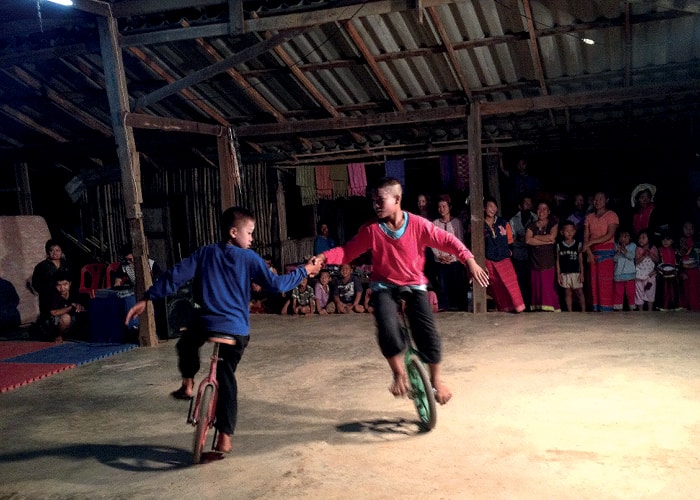 ‘Circus on The Edge’ brings circus arts proffesionals from Asia and Europe to work with local communities in Thailand. Photograph: Circus on The Edge. Courtesy of Anupama Sekhar.
‘Circus on The Edge’ brings circus arts proffesionals from Asia and Europe to work with local communities in Thailand. Photograph: Circus on The Edge. Courtesy of Anupama Sekhar.
Can you envision greater cultural solidarity or exchange happening through economic and trade connections between India and Africa, and to what extent might economic arrangements hinder cultural exchange?
Thousands of years ago, Indian traders are said to have used seasonal monsoon winds as guides to sail to the East coast of Africa in search of gold, ivory and gemstones. Trade between India and the African continent has a long history. Since the new millennium set in, India’s trade with Africa has been revived. The India-Africa economic partnership has been growing to diversify beyond trade and investment to technology transfer and knowledge sharing. In terms of public- private sector engagement, it appears that trade relations are largely driven by the Indian private sector, although the continent does receive a substantial part of India’s technical aid for the Global South.
Since 2008, the India-Africa Summit has been attempting to woo and engage the African continent on the principles of equality, respect and mutual benefit. At the most recent edition of the India-Africa Summit in October 2015, we heard from Indian public officials that this relationship is one between “old friends and old family.” It is here that I notice a vast gap in our partnership.
While the commercial dialogue is on track and growing steadily; the people-to-people dialogue needed to justify being ‘old friends’ is conspicuous in its absence. I think it was Mohandas Gandhi, the Father of the Indian Nation, who hoped for a commerce of ideas, not merely of manufactured goods between the two friends. More public and private investment must accompany the current economic arrangements in order to create a deeper cultural understanding of each other. This is particularly important because stereotypes of Africa continue to prevail in Indian popular culture. Also, African students in India have frequently complained of poor, even racist treatment. Larger socio-cultural issues need urgent addressing. Advocating for greater cultural exchange to accompany trade is a responsibility that lies with the civil societies on both sides of the Indian Ocean.
In your experience, does migration (both internal and foreign) in India enable increased opportunities and instances of cultural exchange or increased cultural assimilation?
The migration histories of Indians are complex. For nearly two hundred years, Indians have left home to make newer homes elsewhere. The story of Indian emigrants begins in the early days of British colonial rule and continues into the first decades after Indian independence in the 1940s and 50s, when many moved to the UK in search of better economic prospects. In the last twenty to twenty-five years, professionals (doctors, IT engineers etc) have moved west and low-wage workers have spread across ‘developed’ Asia. In this long history of relocation, the tension between cultural exchange and cultural assimilation remains. In some cases, Indians have adopted local names (often in compliance with local laws) and local attire to ‘fit in’, while being able to retain many other cultural customs from home. Is this a cultural loss? Is some amount of cultural assimilation a pragmatic response to the pressure of being a migrant in a new society? These are challenging questions that we must ask ourselves.
Internal migration within India is by no means a less complex phenomenon than international migration. Every day, thousands of Indian citizens move from villages to cities, largely for economic reasons. The resulting multi-ethnic, multi- religious fabric of a city like Mumbai, for instance, is a source of great pride for locals. Yet still, outsider-insider issues exist. Invisible lines keep communities divided and language, in particular, becomes a friction point. The story of migration, therefore, is not an easy one to tell.
Do you think that there has been progress made in global development discourses with regards to the acknowledgement of the role that culture plays in shaping human lives?
There has been progress. Culture is now part of the discussions and is on the agenda of global development discourses. This is a first step and we must acknowledge that we have made some progress, but we have to work harder to make culture a significant (rather than a symbolic) part of the debates.
To this end, we, as the arts and culture community, must learn to talk more with other sectors such as health and education. We must build alliances with other civil society groups engaged in the important conversations around development. For me, this is the critical next step in integrating culture in the development discourse.
In my opinion, the culture sector has remained rather insular in its approach. We talk a lot to each other – but this is akin to preaching to the converted. What we need to do now is to talk more to other sectors and to be able to convince them of the value of arts and culture in daily life. Much remains to be done here. The day a public health expert or a teacher can also passionately advocate for the arts is the day we can put our feet up and rest.
Sophia Olivia Sanan holds a Masters degree in Sociology, has an academic background in both Philosophy and Visual Art, and has worked as a lecturer and writer in the fields of Visual Culture and Art Education. She is currently working as the Research Manager at the African Arts Institute, a civil society organisation in Cape Town.



